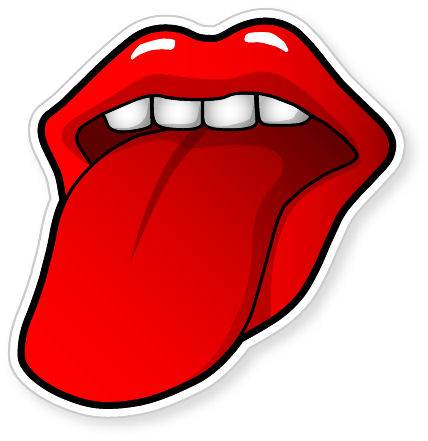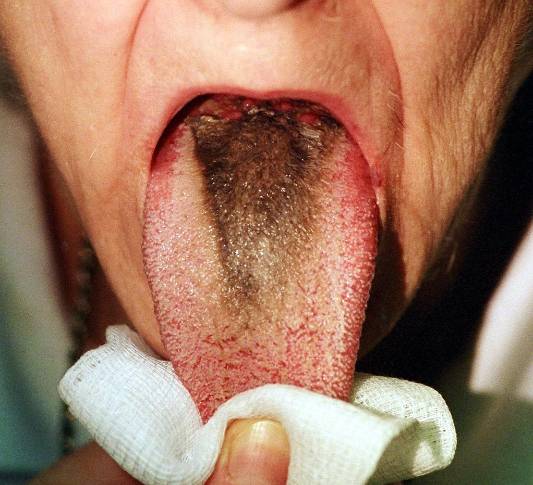What can your tongue tell you about your health? I don’t see a lot of pediatric patients for acupuncture, but when I do, I always look forward to asking the question that throws most new patients for a loop – especially those who are still at the age where following through usually will land you square in the dog house.
The question? “Will you stick your tongue all the way out for me please?” Usually, the little ones look at me, look at their parents, look back at me and then clamp their lips and teeth down in revolt! To anyone under five years of age, this is similar to being told, “Will you stick your middle finger in the air please?”
Practitioners of Traditional Chinese Medicine (TCM) use a variety of different diagnostic tools. We’ll look at the color of your eyelids, we’ll look for markings on your face, we’ll ask you about your bowel movements, about your menstrual history, and of course take your pulse. At the end, we’re also going to stare directly at your tongue.
Why do we look at the tongue and what can we learn from it?
TCM believes the tongue is a microcosm of the entire body and will reflect its excesses and deficiencies. Being directly related to the stomach by proximity and availability, the tongue acts as a very good reflection of our digestive systems. If your tongue’s neighbor the stomach is having problems, it’s most likely going to spill over into your tongue’s life.
Everyone loves to ask, so: A normal healthy tongue is pink in color, has a light white tongue coating on it and is proportionate in size to the mouth that it lives in.
When using the tongue as a diagnostic tool, we’re going to look at four different aspects: the shape, the color, the coating, and the moisture level.
The shape is going to give us insight into fluid metabolism in the body:
- If your tongue is puffy with teeth marks along the side, we know that your body isn’t making use of all of its nourishment. This is a common situation with an over-trained athlete who has pushed their body past its own point of functioning optimally, but has yet to do any real damage.
- On the contrary, if someone comes in with a small, very thin tongue we start to immediately ask if they are dehydrated, or are suffering from a chronic condition that has left them depleted severely.
The color of the tongue can tell you if there is heat in your body or a lack of blood and nourishment. Although people’s natural tongue color varies slightly, a strong sway in one color direction or the other is indicative of symptomology:
 A red tongue will tell you that there is heat in your body such as a fever or a hormonal imbalance that is leading to hot flashes or temperature changes. Stress can also make the tongue red. A red tongue tip (heart and lung area) may be present in an asthmatic or even someone recently suffering from a break up. How many of us have seen a tongue ulcer present with high fevers in children? Heat within the body shows well on the tongue.
A red tongue will tell you that there is heat in your body such as a fever or a hormonal imbalance that is leading to hot flashes or temperature changes. Stress can also make the tongue red. A red tongue tip (heart and lung area) may be present in an asthmatic or even someone recently suffering from a break up. How many of us have seen a tongue ulcer present with high fevers in children? Heat within the body shows well on the tongue.- A purple tongue will tell you your circulatory system is backed up, perhaps from a major injury or pain condition. Stresses to the Central Nervous System cause physical muscular tension. IN tern this creates pressure on your arteries, slowing the flow of blood. This will be reflected by the purple nature of the tongue. Your body might also be dealing with inflammation or an infection.
- A pale tongue on the other hand is a sign of a deficiency or a lack of energy. This is common in women immediately following their menstrual cycle or in both sexes following a rigorous training cycle or long distance race. This is also common with anemia or after a long standing disease where the body had to tap into its reserves to fight itself back to health. Your immune system is weak here and needs a boost.
The tongue coating (the film that dental commercials tell you to scrub off) and moisture levels give you further insight into your condition:
- A thick coating tells you your condition is more serious and may have a component of phlegm to it. If phlegm shows up in your nose and the corners of your eyes, why not something similar on your tongue?
- A thin coating as was stated above, is actually normal, but a very thin or absent tongue coating lets us know that our system is being taxed greatly, or we have a lack of body fluids.
In combination with the size of the tongue coating, the color of the coating is important as well.
 A yellow coating is a sign of heat and/or infection in the body, as is yellow phlegm from the nose.
A yellow coating is a sign of heat and/or infection in the body, as is yellow phlegm from the nose.- A grey or black coating is a sign that it’s time to stop smoking and drinking coffee before your acupuncturist visits. It’s also a sign that something is very wrong with your health.
- A thick white coating tells us again there is cold in your body and may be responsible for poor circulation in your extremities, abdominal pain and cramping, and premenstrual pain.
- If any of the coats are overly wet then we know the body isn’t using fluids efficiently and similarly a dry or burnt coat indicates a fever or heat issue.
 All of the diagnostic tools listed above can be used in conjunction with the organ map pictured here as well. A thick yellow coat in the back of your tongue might be an early sign of a urinary tract infection, while the same coat on the front section of your tongue is more likely an upper respiratory issue.
All of the diagnostic tools listed above can be used in conjunction with the organ map pictured here as well. A thick yellow coat in the back of your tongue might be an early sign of a urinary tract infection, while the same coat on the front section of your tongue is more likely an upper respiratory issue.
Take a look at your tongue for a few weeks and begin to notice the differences in it depending on how you’re feeling that day is it swollen when you are run down, is it red when you feel feverish or stressed out? With your tongue sending you signals about your entire system on an hour by hour basis, the more familiar you are with its language, the better health decisions you’ll be able to make for yourself.






